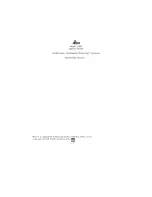
9
Arpeggiator
Standard Page
Normal: In this mode, captured notes
remain in the chord buffer only for as long
as the corresponding key is held down.
The arpeggiator output pattern varies
dynamically as keys are released. When
no keys are being held down, the
arpeggiator produces no output.
Auto Hold: Under Auto Hold, captured
notes remain in the chord buffer
indefinitely, even after all held keys have
been released. The arpeggio continues to
play as if all keys which have been played
were still being held. New notes continue
to be captured as long as at least one
key is still being held. The first note or
chord which is played following the release
of all keys begins a new capture "session",
at the same time clearing all previously
captured notes.
Capture Mode
These settings control the way in which
received MIDI notes are
captured to (and
removed from) the chord buffer. One of
the four possible modes is always active.
In all capture modes, the arpeggiator
keeps track of the order in which captured
notes arrived, in addition to recording note
number (of course) and velocity for each
note. Thus, the use of both Note Number
and Note Order scan modes is always
possible, regardless of the Capture Mode
setting.
The capture mode setting can be changed
at any time. In some cases, after doing
this, you may need to use Clear to empty
the chord buffer completely (e.g., if you
change from Auto Hold to Normal after
releasing all keys).
Extend 1: Notes are added to the chord
buffer as they are played and remain in
the chord buffer indefinitely. This capture
mode permits notes to be added one at
a time. Extend mode thus makes it easy
to create melodic arpeggios – a
particular note can appear multiple times
at different points within the arpeggio.
Note capture continues until the chord
buffer is full (sixteen captured notes).
The Clear button must be used to clear
the chord buffer and silence the
arpeggiator, or to capture a new chord.
Note that Scan Mode (see following
section) must be set to Note Order in
order to have the arpeggiator play the
notes back in the order in which they
were captured.








































